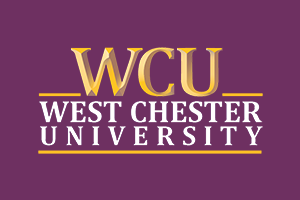FAQS
Why should I pursue a graduate degree in applied and computational mathematics?
Applied mathematicians are often recruited by companies for positions as financial analysts, technical consultants, systems engineers, meteorologists, software developers, etc. They must possess the skills to filter theoretical results spanning different mathematical disciplines in order to formulate models of complicated phenomena; they must be able to critically analyze the models and run simulations using mathematical software to test their validity; and they must be able to effectively communicate mathematical concepts and results to scientists and non-scientists from a wide array of disciplines.Individuals possessing these skills at the master’s and doctoral levels are highly sought after by financial and industrial companies at the regional and national levels.
The ground-breaking SIAM report Mathematics in Industry published in 1995 highlighted the need for graduates trained in a combination of mathematics, applications, and computation, and asserted that a master’s degree in applied mathematics is a good match for many positions in business, government, and industry. It highlights the following as essential pillars of a marketable applied mathematics graduate program: Modeling, Teamwork, Computation, Interdisciplinary, and Communication.
The U.S. Bureau of Labor Statistics confirms the need of a workforce with more mathematical training. Employment growth for actuaries, mathematicians, operations researchers, and statisticians is anticipated to be particularly strong. The Occupational Outlook Handbook of the U.S. Department of Labor’s Bureau of Labor Statistics handbook states that “employment of [master’s level] mathematicians is projected to grow 23% from 2012 to 2022, much faster than the average for all occupations. Businesses will need mathematicians to analyze the increasing volume of digital and electronic data.”Moreover, the rate of employment for those with expertise in operations research (who use advanced mathematical and analytical methods to help organizations investigate complex issues, identify and solve problems, and make better decisions) is projected to grow at an even faster rate of 27% from 2012 to 2022. This is one of the content areas in which the M.S. Program in Applied and Computational Mathematics at WCU focuses.
The M.S. Program in Applied and Computational Mathematics at WCU as many unique features, including: the project-based curriculum and pedagogical approach (emphasizing team problem-solving, formal technical reports, and presentations), close interaction with representatives of local industry throughout the program (rather than through a single, isolated 14-week long internship), and dual emphasis on applied and computational mathematics throughout the curriculum.
Can I succeed in this program if I haven’t had mathematics in a while, or if my background is in an area other than mathematics?
Yes, you can! In order to ease the transition for those students who may have been away from an academic environment for a length of time, we have designed the transition course MAT 500 Fundamentals of Applied Mathematicswhich applicants will be able to take during Fall, Spring, or Summer semester (their choice) as an independent study with one of our applied mathematics faculty. This course is an intensive review of calculus, linear algebra, and differential equations, and exposes you to the use of mathematical software.
The variety of backgrounds of students entering this program is actually a strength of the program, not a detriment, especially from the viewpoint of team problem-solving. Investigating problems in an industrial setting requires the background from many different fields, including the sciences, engineering, finance, economics, and beyond! Working together with fellow students with a variety of backgrounds will enrich your experience.
Do I need to have a programming background?
